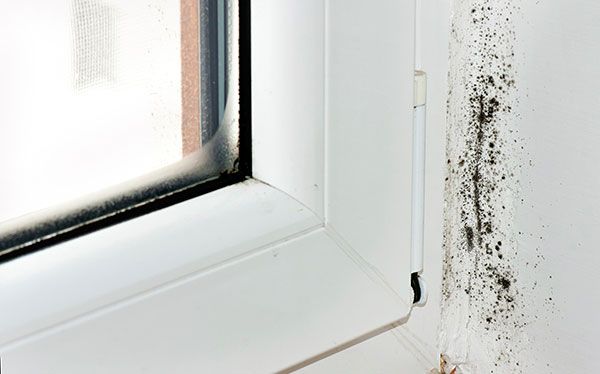Maintenance requests related to condensation, dampness, and moisture problems are always cause for concern. These issues can result in mold growth, cause damage to personal property, exacerbate structural degradation, and increase the risk of potential infestation, all of which are costly to remediate.
Dampness and moisture in a unit often indicates a lack of insulation, ventilation, heating, and/or a combination of factors. It can occur on wall surfaces, at the base, or even from the top near the ceiling. It can also pool near egress windows, vents, and shafts, although moisture is usually most prevalent in poorly ventilated areas.
In most cases, moisture related issues can be tied back to tenant choices and lifestyle. Some examples include failure to open windows, unwillingness to utilize general ceiling fans or extractor fans in bathrooms, and covering vents with personal effects. Thus, it’s important to consider a tenant’s way of life and discuss common solutions with them when exploring the root cause of moisture related maintenance requests.
This checklist will help you determine if a moisture related request is likely tenant related or if there is a deeper issue that should be investigated further. Proactively identifying and remediating these issues can help avoid non-compliance with local and state housing, health, and safety regulations.
Basic Checklist for Moisture Issues to help determine if the problem might be a tenant caused issue
Are there blankets or other coverings over the blinds and/or windows?
Windows that are frequently closed or covered prevents humid air from escaping resulting in poor ventilation.
While tenants shouldn’t be expected to keep windows open at all times, advising them to open windows while cooking or showering can help improve airflow and reduce condensation.
Are there doors closed inside the dwelling unit?
Similar to windows, closed doors can trap humid air in rooms throughout a unit. By not allowing air to properly circulate, condensation and moisture build-up can occur.
Tenants often close bedroom doors regularly to try and retain cool air and reduce noise in an attempt to improve sleep quality. However, most people are unaware that a sleeping person can exhale more than a liter of water vapor while they sleep.
Without proper ventilation, this can be a major source of condensation, especially during colder nights. Consider other closed off areas as well, such as bathrooms and kitchens, both of which routinely release steam.
Is the heat turned down? Is the heat turned off at the breaker?
Having the heat turned down or completely off can sometimes foster moisture related issues. Increasing the heat in a unit, even a few degrees, warms the air and allows it to hold more water molecules, thereby reducing relative humidity. Bumping up the thermostat and opening windows and doors can help maintain proper humidity without sacrificing comfort.
Are there any metal windows?
Windows made out of aluminum or steel are more prone to condensation. That’s because they can transfer temperature more rapidly than other materials. Opening windows, running a ceiling fan, and using dehumidifiers can help reduce moisture build-up from this source. Weatherstripping can also help create an airtight seal preventing outside humidity from moving into a unit.
Is there a noticeable temperature differential between dwelling spaces?
If there is a noticeable temperature difference between dwelling spaces, chances are the tenant is keeping doors closed and not using ceiling fans or vents. They could also be utilizing space heaters or small, personal fans that inhibit air circulation which can lead to increased moisture.
Is there furniture up against the walls that might be hindering air flow?
Furniture, clothing, or other personal property that the tenant owns may be restricting air from flowing properly at a vent or exhaust. Not only can this cause moisture build up, but they risk their own personal property being damaged in the process. In some cases, this can also lead to other risk exposure such as a fire.
Are there multiple beds or other indications of excessive occupancy?
More people occupying a unit increases the amount of water vapor being released into the air. It also can increase indoor temperatures from the additional body heat. Additionally, expect greater utilization of bathing and cooking areas which commonly release steam into the air.
All these factors can contribute to fostering a humid indoor environment which can lead to greater health hazards and remediation costs.
Stove elements burned out?
It sounds crazy but some tenants may try to use the stove to help heat their unit. Others may use it to continuously boil pots of water or leave the oven door open. All of these factors impact the indoor humidity which can lead to moisture related issues.
Furthermore, these types of tenant practices are dangers for other reasons. It can lead to excessive carbon monoxide build up, increases the risk of a fire, and it can impact the longevity of the appliances being used leading to risk of both mechanical and electrical issues.
Is it during the winter months?
When the weather is cold, tenants often hunker down and ramp up the heat. But often this causes the air to become dry. Many tenants turn to a humidifier which can add moisture to the air which can lead to condensation forming on walls, floors, or other surfaces.
To summarize, moisture related issues should always be investigated with proper due diligence. However, the root cause of these issues isn’t always clear and can often stem from a tenant’s choices and lifestyle. This checklist should help you identify if a moisture related issue is tenant related.


